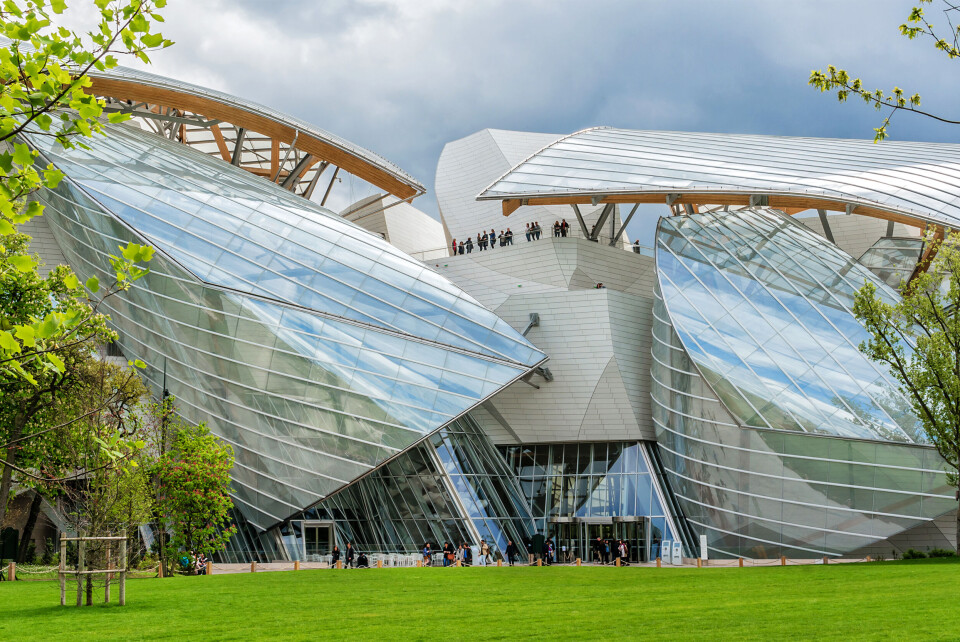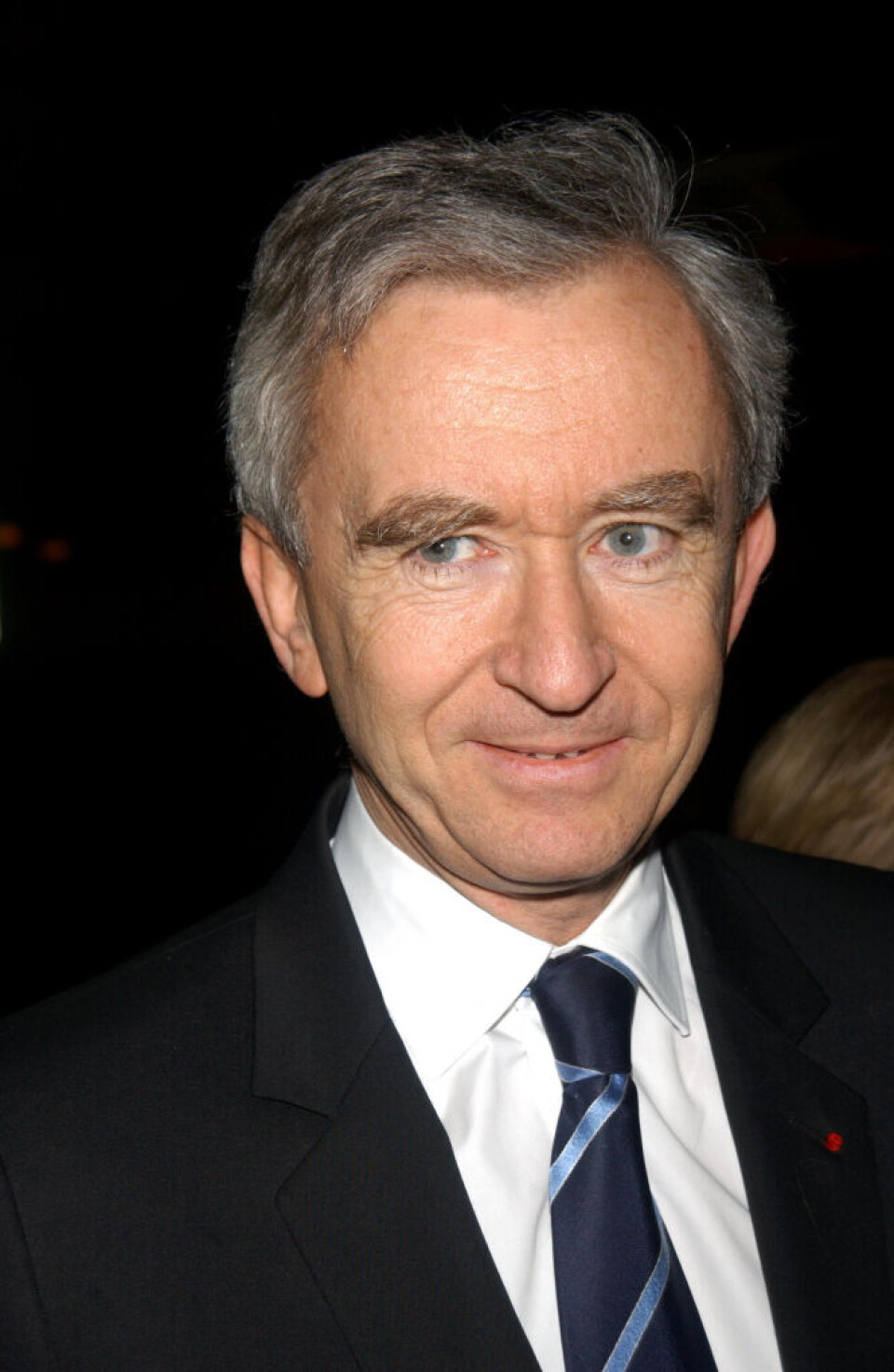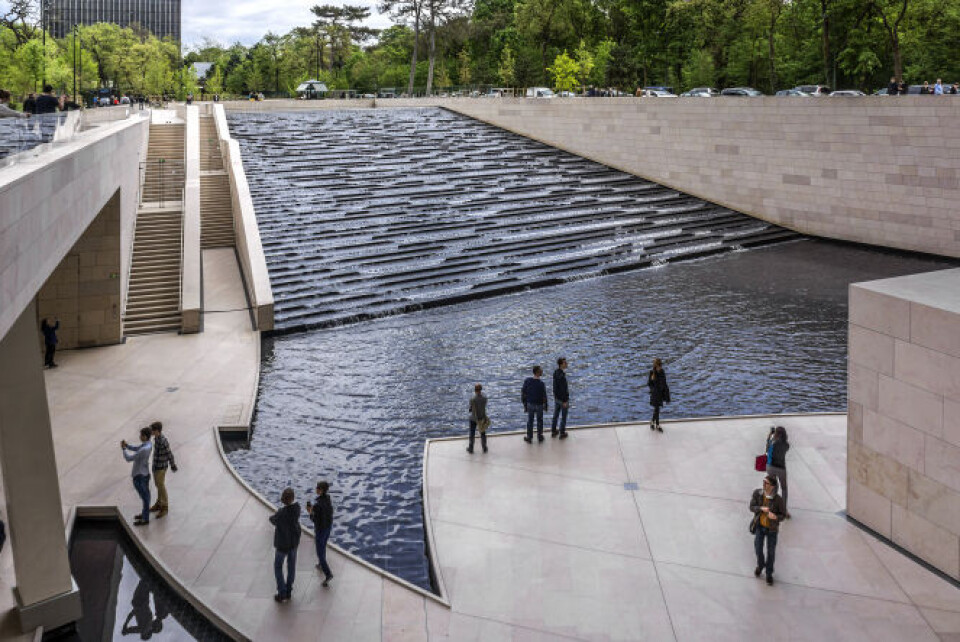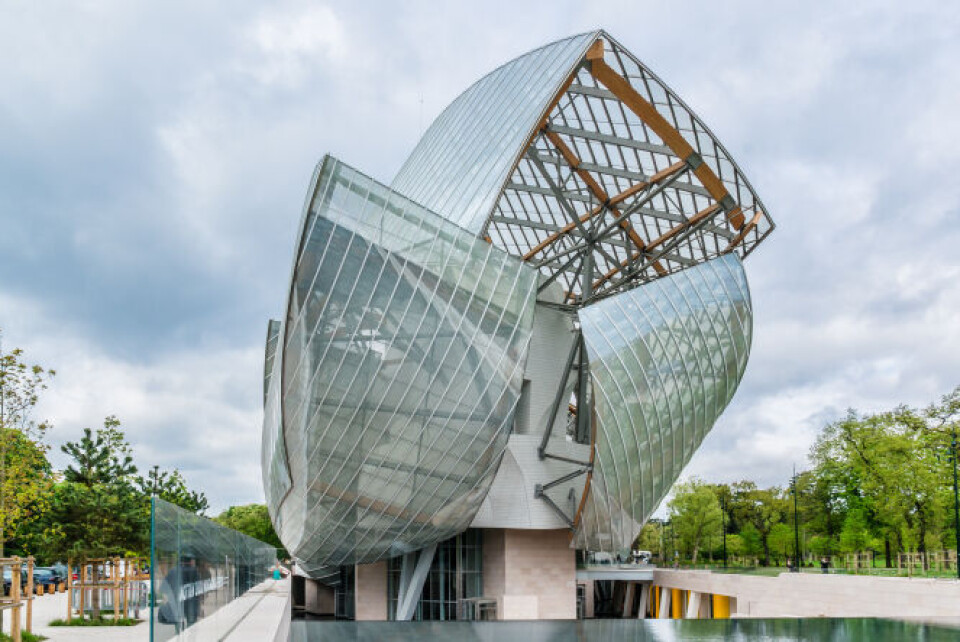-
From Cézanne to the Césars: four French art and culture recommendations
Impressionist masterpieces in Aix-en-Provence, a stylish Louvre exhibition, and a crime series to watch
-
Photos: Paris exhibition explores what people do alone at home
Behind the curtain: L’Intime Expo takes a fascinating look at people's private lives
-
French art gallery exhibits paintings made by a two-year-old
The abstract creations are being displayed until next week
Plain sailing? Not for the Paris art museum inspired by a ship
In our series on the architecture of France we look at the Fondation Louis Vuitton

It is monumental enough to anyone who stands beside it, but even more impressive when viewed from a drone, with its cones of glass rising out from the trees of one of Paris’s largest parks.
The building was inspired by icebergs and sails and envisioned as the city’s new Grand Palais, the museum and exhibition complex on the Champs Elysées.
Its opening was attended by then-president François Hollande, but the real power players photographed on October 20, 2014, were the two men he was sandwiched between – celebrated US architect Frank Gehry and Bernard Arnault, the French business mogul, director of luxury goods company LVMH and, at that point, the 13th richest person in the world.

We are talking, of course, of the Fondation Louis Vuitton, the Paris art museum and cultural centre sponsored by LVMH and its subsidiaries in a partnership between both private and public sectors and located in the Bois de Boulogne.
Read more: Louvre sister museum in old French mining city celebrates 10 years
Head-turner
It was feted variously as a “unique piece of art” (the president), a “dream come true” (the mogul), and a “magnificent vessel symbolising France’s cultural vocation” (the architect).
It is certainly a head-turner.
The building comprises 12 glass ‘sails’ made up of 3,600 panels of curved glass, which envelop an immaculately white ‘iceberg’ formed from 19,000 panels of Ductal (fibre-reinforced concrete), each one unique.
Contained within this innovative structure are 11 galleries, an auditorium on the lower ground floor, multi-level roof terraces for events and art installations, and a restaurant called Le Frank.
Just as impressively, the building was constrained by a stipulation that it had to be constructed within the square footage and two-storey volume of a bowling alley that previously stood on the site.
Anything higher had to be glass.
Required innovative technological developments from the very beginning

So complex was the design that it required innovative technological developments from the very beginning.
These included 3D design software that allowed all teams to work simultaneously on a digital model and exchange information in real time.
Some of the 160 professional bodies that worked on the project were subsequently awarded prizes for state-of-the-art building and fabrication techniques, while Harvard included the build among its programme of studies for future architects.
The fragmented nature of the building follows Gehry’s signature deconstructivist style, giving it a similar tone and aspect to the cones, domes and waves that have made the architect a famous name across the globe, especially after his success with the Guggenheim Museum in Bilbao.
‘We wanted to offer Paris an exceptional venue for art and culture’
Mr Arnault said: “We wanted to offer Paris an exceptional venue for art and culture and bet on boldness and emotion by entrusting Frank Gehry with the construction effort of a building that will be emblematic for the 21st century.”
Mr Hollande, meanwhile, forecast that nearby apartments would be marketed as enjoying a “view of the Fondation Louis Vuitton”, much as the most expensive of Paris’s real estate often boast one of the Eiffel Tower.
Read more: Biennale de Lyon art fair now one of France’s key cultural events
As well as affecting the local property market, the Fondation’s opening forced Paris’s public transport operator RATP to alter some of its bus routes to include a new stop there.
The museum has already made a name for itself, not least for exhibiting, in 2016/17, part of the collection of one of the greatest art patrons of the early 20th century, Sergei Shchukin.
The visionary Russian collector of French modern art saw his paintings appropriated by the government after the 1917 Revolution.
Shchukin escaped to Paris, where he died in 1936.
The collection was later broken up but, of the original 278 works, the Fondation Louis Vuitton managed to exhibit 127 – a major coup that attracted 1.6 million visitors.
It has also hosted paintings from New York’s MoMA, by the Austrian painter Egon Schiele, by American artist JeanMichel Basquiat and, more recently, photographs by Cindy Sherman.
Read more: Paintings from Van Gogh were not designed to float around people
Made headlines, but for the wrong reasons

The Fondation Louis Vuitton has made headlines, too, for rather less altruistic endeavours than bringing great art to the masses.
There have long been suggestions that it is simply a huge vanity project for Bernard Arnault, fuelled by jealousy of fellow French businessman François Pinault, whose own art collection is spread out across museums in Venice and Paris, including the capital’s landmark Bourse de Commerce building.
For his part, Mr Arnault has said “any comparison with other initiatives would not be pertinent”.
However, it is hard not to view the Fondation Louis Vuitton as yet another element in a continuing battle between the two tycoons to outdo each other in the art world.
Mr Arnault, for example, bought the British auction house Phillips just after Mr Pinault became owner of Christie’s in 1998.
Far more damaging, though, are allegations that the Fondation’s construction was only allowed thanks to a special law that Mr Arnault is suspected to have lobbied for.
Despite tight construction regulations in the Bois de Boulogne, the then-Paris mayor Bertrand Delanoë allowed building to start in 2008.
In 2011, an association for safeguarding the Bois de Boulogne won a court battle to suspend work, arguing it was disrupting the peace of the park and had come too close to a public right of way.
In the end, a special law was passed, which deemed the Fondation to be in the national interest and cleared the way for it to go ahead.
Construction restarted that winter.
The cost of building it has also been the subject of controversy.
It reportedly ballooned from initial projections of €100million to end up just short €800million.
Rather too handily, many people thought, the Fondation was able to claw back a large proportion of that sum thanks to the Aillagon law, named after former minister of culture Jean-Jacques Aillagon, that allows a generous 60% tax cut for companies investing in cultural patronage initiatives.
Read more: France ordered to return ‘lost’ Renoir, Gauguin and Cézanne artworks
Latest scandal
And the latest scandal?
Next time you visit, between gawping at all those paintings, sneak a look at the security guards.
Their working conditions were recently investigated by independent online newspaper Mediapart, which claims security staff are forbidden to sit down or move on their 12-hour shifts, causing acute discomfort and more serious health issues.
The Fondation Louis Vuitton’s next big exhibition opens in April, celebrating Jean-Michel Basquiat’s collaboration with Andy Warhol in the 1980s.
Long term, Mr Arnault’s 55-year lease with the city of Paris expires in 2062.
At that point, the art foundation reverts to mairie control and becomes, effectively, a gift to the city.
Related articles
Coffin of ancient Egypt’s ‘greatest king’ goes on display in Paris
Rare painting found behind a door sold for €600k at auction in France
New Tutankhamun show breaks France visitor record
























